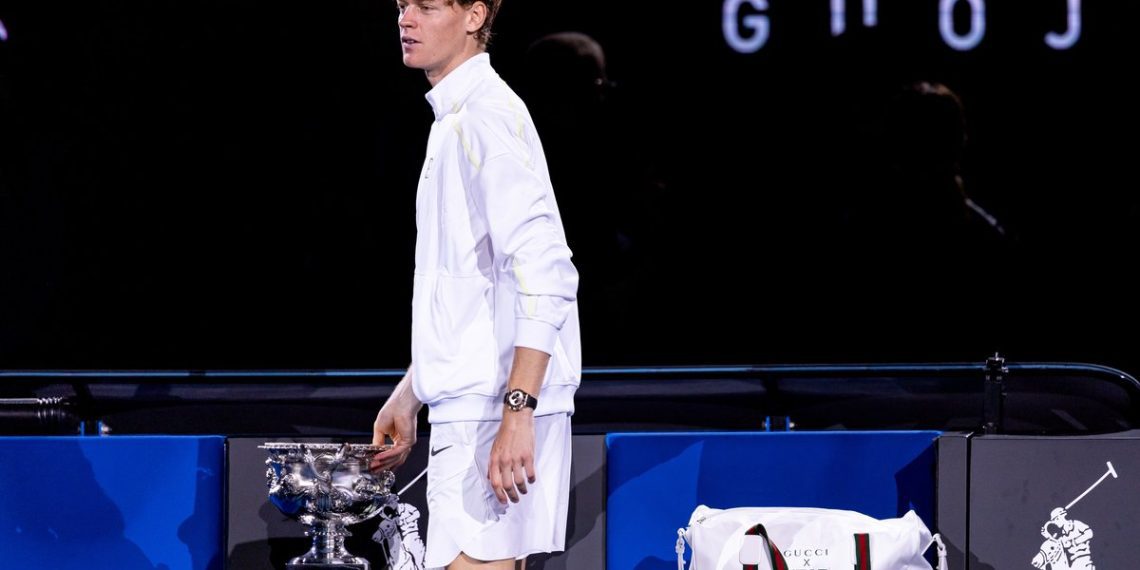The world of tennis is reeling after the bizarrely convenient resolution of Jannik Sinner’s doping case, a scandal that has left former Wimbledon semifinalist Tim Henman and countless fans questioning the integrity of the sport’s anti-doping system.
The 22-year-old Italian, who recently captured the Australian Open title, was staring down a lengthy legal battle over his positive test for the banned substance clostebol. Originally, the World Anti-Doping Agency (WADA) was seeking a ban between one and two years. However, in a shocking turn of events, a last-minute agreement between WADA and Sinner’s team resulted in a dramatically reduced three-month suspension—one that ends just before the start of the French Open.
This “coincidence” has not gone unnoticed, and Henman, like many in the tennis world, is raising serious questions about the integrity of the process.
A Convenient Ban That Raises Eyebrows
Sinner’s initial appeal hearing at the Court of Arbitration for Sport (CAS) was scheduled for April 16th and 17th, a date that could have resulted in a much harsher punishment. Instead, the case was abruptly settled, ensuring that the world No. 1 will be absent from major Masters 1000 tournaments—including Indian Wells, Miami, Monte Carlo, and Madrid—but will make his return just in time for Roland Garros and his home event, the Italian Open.
For Henman, this timeline is far too convenient to ignore.
“First and foremost, I don’t think in any way he has been trying to cheat at any stage, I don’t believe that,” Henman told Sky Sports News. “However, when I read this statement this morning, it just seems a little bit too convenient. The timing couldn’t have been any better for Sinner, but I still think it leaves a pretty sour taste for the sport.”
A “Negotiated” Outcome That Undermines Anti-Doping Efforts?
Perhaps the most troubling aspect of the case, according to Henman, is the impression of a backroom deal rather than a clear-cut judgment. Unlike traditional doping cases, which often result in a definitive guilty-or-not-guilty ruling, Sinner’s case was resolved through a settlement—something rarely seen in anti-doping rulings.
“When you’re dealing with drugs in sport, it very much has to be black and white. It’s binary—it’s positive or negative, you’re banned or you’re not banned. When you start reading words like settlement or agreement, it feels like there’s been a negotiation, and I don’t think that will sit well with the player cohort and the fans of the sport.”
Henman isn’t alone in his skepticism. Many in the tennis world are questioning whether the sport’s governing bodies have taken a soft stance on a rising superstar, ensuring his absence from ATP events while protecting his participation in high-profile Grand Slam tournaments.
Why Did It Take So Long?
Another major issue Henman pointed out was the painfully slow handling of Sinner’s case. The Italian tested positive nearly 12 months ago at Indian Wells in March, yet it took nearly a year to reach a conclusion.
“To have had this cloud over his head for so long emphasizes how we need to get to these conclusions a lot quicker. From Sinner’s point of view, he will be very keen to serve his ban, draw a line in the sand, and get ready for Roland Garros, which is such a big priority for him.”
Is Tennis’ Anti-Doping System Failing?
The Sinner case has ignited an intense debate about the credibility of tennis’ anti-doping policies. If top-ranked players can negotiate their way out of long bans, how does that impact fairness in the sport? And more importantly, does this set a dangerous precedent for future doping cases?
For now, Jannik Sinner will sit out the next few months, conveniently missing major ATP events while ensuring he’s fresh for Roland Garros and the summer Grand Slam season. Whether his case truly represents justice—or a disturbing loophole in the sport’s anti-doping system—remains to be seen.









